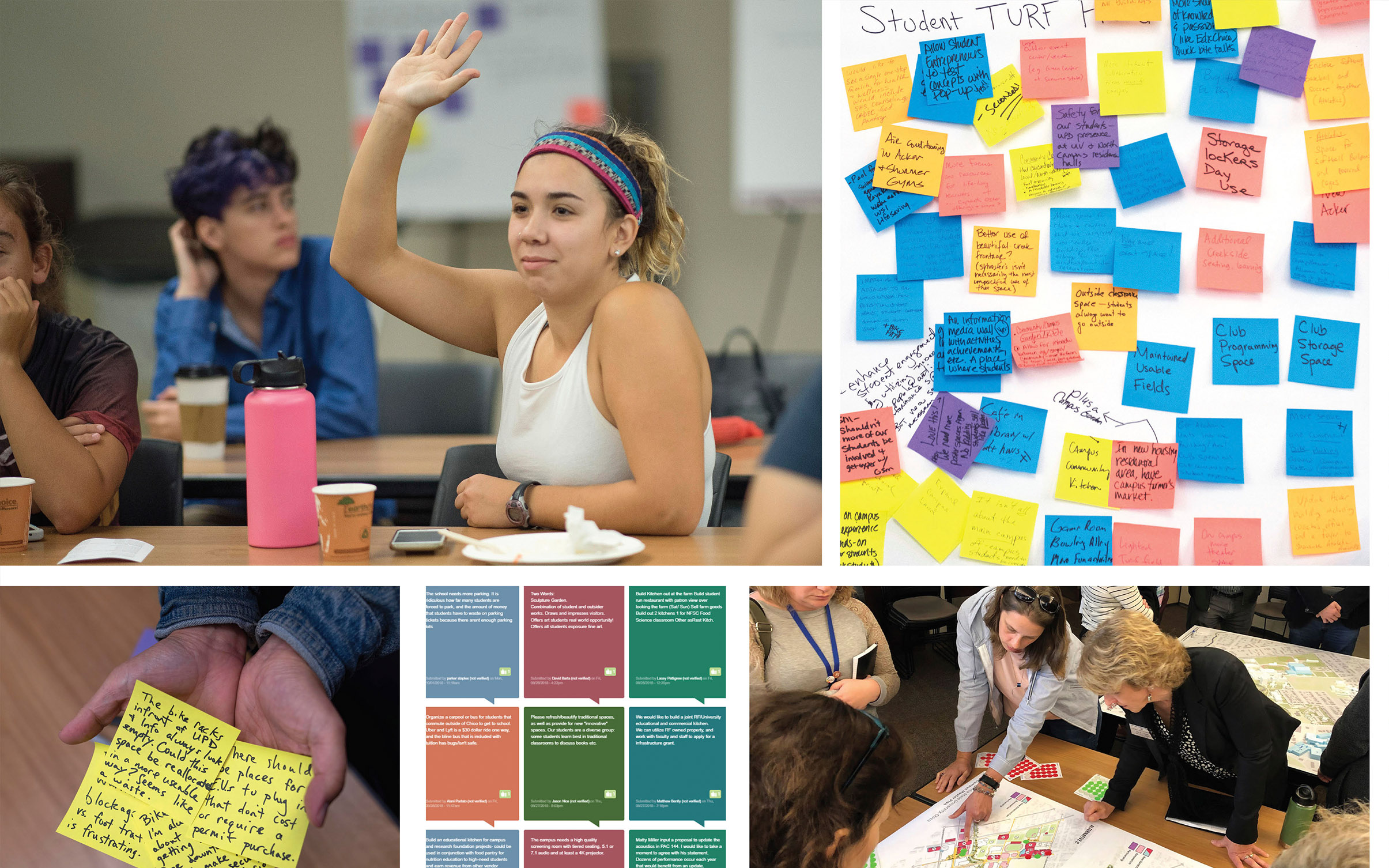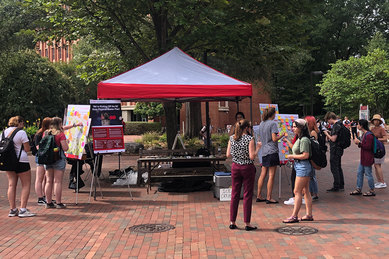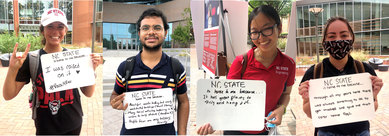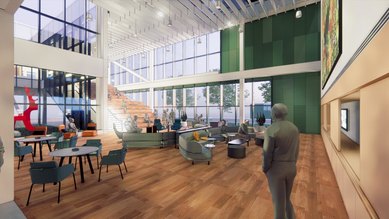"Why Are You Asking Me?!": Increasing the Impact of the Student Voice
In our work on campuses across the U.S., we love to hear what students have to say about the physical campus and how it shapes their experiences, both positively and negatively. These vital experiences are what build memories that will connect them with the institution, faculty and friends they meet while they are there. Reflecting on my own time on campus, I can easily connect my most meaningful memories with place:
Wurster Hall at UC Berkeley. The great porch as you enter where you would see friends or the view from the eighth floor where twice a year, a group from the studio would gather on the balcony to watch the sun set through the middle of the Golden Gate Bridge. A sense of being connected to something bigger and being inspired as a result.
But not only architects, engineers and planners pay close attention to their surroundings. So, it should be fairly simple to find ways to integrate the student voice into planning and design… or is it?
This past year, the Society for College and University Planning (SCUP) Annual Conference focused on a sense of belonging, which inspired us to convene a group of leaders from a range of campus types and geographies, including CU Boulder, Syracuse University and City College of New York. Together, we explored strategies to gain meaningful input from students, with the goal of creating a sense of belonging as part of the process, not only as a desired outcome of the finished result. Throughout the conversation, an important consideration remained top of mind: “For whom are we designing? Who are our clients… really?” With the resounding answer being “students,” we pushed to improve the way that the student voice is integrated into our work.
This conversation led us to five strategies for the planning and design process that we believe will have a positive impact:
- Create a safe space for individual, uninhibited responses, provided virtually on student’s own terms, that can be tied to specific places and experiences on campus. This is key for truly authentic and actionable feedback to emerge.
- Build a broad understanding of campus culture as a backdrop for specific student feedback. Start with open inquiry with campus leadership and initiate direct outreach to Student Affairs leadership, who have their finger on the pulse of student communities on campus. Campus Tours for new or prospective students can also provide a window into highlights of the physical campus.
- Channel students’ passion. Not only for their individual priorities, but more importantly, to contribute to something bigger that will impact the groups to which they belong now and into the future such as their student organization, college and/or residence hall. Coordinated outreach from leaders of these groups to students can have a positive impact in incentivizing students to think bigger and take the long view.
- Acknowledge the value of the student voice. Ad-hoc or opportunistic engagement of students may not lead to the degree of ownership needed to truly understand the issues from a student lens. A range of strategies will likely be needed based on the campus context: compensation for participation; a dedicated group for the purpose of providing input; a sophomore “year of service.”
- Prioritize quick wins that can take shape in small, strategic, high impact projects that clearly reflect the results of student input and earn their trust. In most cases, these will be defined by a high degree of interactivity that will tempt students to “make it their own” through flexible furniture, space re-configuration or hands-on engagement with the physical environment (as in a garden).
We are already seeing positive results from our embracing many of these strategies in our current work:
As part of our North Carolina State University Physical Master Plan, leadership outreach from the chancellor to students drove our team to think broadly about how to capture the student’s passion as a result. We actively used our MapMyWolfpack mobile app to give students an opportunity to share their personal place-based campus experiences.
The idea for a new Multicultural Center at Michigan State University (MSU) started with a student petition which grew and expanded to engage multiple student organizations on campus. This positive student-driven momentum continued into the design phase, providing proof that the student voice can have a resounding impact. “The building will not only create a sense of belonging and a home away from home for marginalized communities, but it will also afford a plethora of dynamic learning opportunities for our diverse Spartan and greater Lansing communities,” said Marcus McDaniel, Jr., president of MSU’s Black Students’ Alliance.
For the design of the Student Services Center renovation at the College of DuPage, numerous student outreach events provided much greater depth to our understanding of what would truly make the spaces successful. Beyond pure functional needs, the collective student voice reinforced nuances such as visibility, safety, exploration, motivation and cultural expression. These important perspectives have influenced the character of the space, adjacencies and material selections.
Each of these examples should encourage us, as planners and designers, to consider the student voice as an integral part of the design team. As students return to campus every fall or arrive for the first time, how can we increase their awareness of how the physical campus shapes their experiences? Or, perhaps with a more lasting impact, how can we help them see a connection between the physical campus environment and their fundamental concerns for cost, sustainability, health and wellness? A carefully integrated planning and design process can be transformative in achieving this dialogue!



